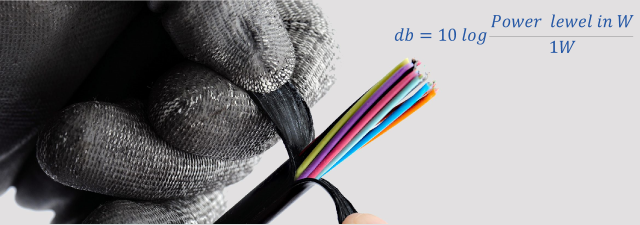
What are the measurement units for power?
Optical power is measured in linear units of milliwatts (mW), microwatts (uW - really the greek letter "mu"W), nanowatts (nW) and decibels (dB).
What is the difference between "dBm" and "dB"?
dB is a ratio of two powers, for example the loss in a fiber optic cable. When power is measured in linear units (mW, uW or nW), dB is calculated on a log scale using this formula:
power (dB) = 10 log (power1/power2)
If we are measuring absolute power levels, the measurement is generally referenced to 1 milliwatt (mW), is expressed as "dBm" and the calculation becomes:
power (dBm) = 10 log (power/1 mW)
Thus 1 mW = 0 dBm, 1 uW = -30 dBm, 1 nW = -60 dBm and two equal powers compared are 0dB (eg. power being the same, there is no loss.)
What power level should a source have?
It depends on the type of source. When coupled into a good test cable, the source output power will be in these ranges:
LED: -10 to -25 dBm into 62.5/125 fiber
Telcom/LAN laser: 0 to -13 dBm into singlemode fiber, to +20 dBm with DWDM and fiber amplifier systems
CATV Laser : +16 to 0 dBm into singlemode fiber
What power level should a receiver see?
It depends on the network and type of source. When measured at the end of the network cable, the source output power will usually be in these ranges:
LAN/LED: -20 to -35 dBm into 62.5/125 fiber
Telcom/LAN laser: -20 to -45 dBm into singlemode fiber
CATV Laser : 0 to -10 dBm into singlemode fiber